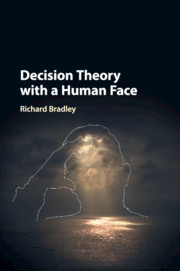Book contents
- Frontmatter
- Dedication
- Contents
- List of Figures
- List of Tables
- Preface
- Introduction
- PART I RATIONALITY, UNCERTAINTY AND CHOICE
- PART II PROSPECTIVE RATIONALITY
- PART III FACING THE WORLD
- PART IV RATIONALITY WITHIN BOUNDS
- 11 Imprecise Bayesianism
- 12 Changing Your Mind
- 13 Decision Making under Ambiguity
- 14 Confidence
- Appendix: Proofs
- Bibliography
- Index
12 - Changing Your Mind
from PART IV - RATIONALITY WITHIN BOUNDS
Published online by Cambridge University Press: 11 October 2017
- Frontmatter
- Dedication
- Contents
- List of Figures
- List of Tables
- Preface
- Introduction
- PART I RATIONALITY, UNCERTAINTY AND CHOICE
- PART II PROSPECTIVE RATIONALITY
- PART III FACING THE WORLD
- PART IV RATIONALITY WITHIN BOUNDS
- 11 Imprecise Bayesianism
- 12 Changing Your Mind
- 13 Decision Making under Ambiguity
- 14 Confidence
- Appendix: Proofs
- Bibliography
- Index
Summary
Agents can change their minds in a number of different ways. They can revise their opinions about one or more prospects, for instance as a result of acquiring new information or of deliberating on some question; they can form new opinions when they need to; and they can withdraw or suspend opinions currently held when confronted with undermining or conflicting evidence. They can also extend their attitudes to larger domains, or restrict them to smaller ones, as they become aware of new prospects, or forget about some.
Of these forms of attitude change, only one – revision – can be completely adequately studied within the Classical Bayesian models of belief and desire. The main obstacle to the study of the other forms is the assumption that agents are fully opinionated, an assumption that leaves no space open for cases in which they make up their minds, rather than simply change them. Nor does it allow for the treatment of cases in which an agent has reason to suspend judgement on some question or to retreat from a previously held attitude; for instance, when someone discovers that the evidence supporting one of her beliefs is unreliable (prompting retreat) or when two experts are found to disagree on some question (prompting suspension). Combined with the assumption of logical omniscience, it also leaves no space open for the treatment of deliberation, understood as a process by which an agent derives the view that she should adopt with regard to some prospect in her attention from her attitudes to other related prospects.
These limitations are not common to all theories of attitude change. In particular, the ‘AGM’ approach pioneered by Carlos Alchourrón, Peter Gärdenfors and David Makinson (see Gärdenfors, 1988), and extended by Sven Ove Hansson (1995) to preferences, in which attitudinal states are represented by sets of sentences satisfying conditions of logical consistency, but explicitly not required to contain every sentence or its negation, allows for a characterisation not only of belief revision but also of various other types of attitude change. My strategy will be to draw on some of the insights of this approach to build quantitative models of the various forms of attitude change. In subsequent sections, I carry over the insights gained from this exercise to the more complex quantitative models of belief and preference.
Information
- Type
- Chapter
- Information
- Decision Theory with a Human Face , pp. 242 - 261Publisher: Cambridge University PressPrint publication year: 2017
